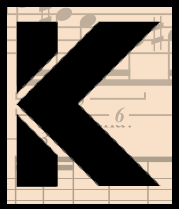 Oblique, an album by guitarist/composer Aaron Myers-Brooks (released on New Focus Recordings) explores microtonality in a unique and idiosyncratic way with the electric guitar as the primary instrument of choice. The music contained on Oblique is entirely composed and performed by Myers-Brooks, all utilizing his 17-tone division of the octave - the last piece being an exception. What I loved about this album is that it offers something for both seasoned listeners of microtonality, but could act as a very digestible early or even first experience with less common divisions of the octave. Myers-Brooks is also a highly skilled guitarist who brings a level of virtuosity to the instrument through various styles and playing techniques. The first track on the album, The 11th and 6th Caves, gets its title from the use of 11:6 polyrhythms presented throughout the composition, as well as The Thousand Caves New York recording studio where the piece was recorded. It is composed of alternating sections that balance clean and distorted guitar tones to create formal shapes and development. Angular melodies bring out the character of the 17-tone octave structure while the rapid changes of clean tone to distortion create an engaging interplay of timbres and implied style. If you’re a fan of shredding this piece is something you’re guaranteed to enjoy. Prelude and Fantasy is a work for electric guitar and digitally tuned piano that allows both instruments to utilize the 17-tone octave, specifically in A minor. This piece offers a more placid energy and contrasts well against the frenetic album opener. The slower unfolding allows for the inherent tone colors of the microtonal system to shine through in a more reflective way. Pairing the distorted electric guitar with the piano establishes a nice dichotomy of voices in which they can simultaneously meld together and act as unique elements within a compound texture Tracks 3-7 make up a multi-movement composition in 5 parts titled Energy Shapes No. 3. This composition is for electric guitar and electronic sounds wherein the guitar is processed in real-time using effects in Ableton Live, along with FM synthesis in most of the movements. Each movement is distinguished by its use of live processing, presence of the synthesizer, and musical material, all of which take unique approaches to these elements. Energy Shapes focuses more on creating sonic environments through combining electronics with an often riff based approach to the guitar rather than the more angular melodic playing found in the first two works, showcasing Myers-Brooks versatility as a both a composer and performer. In Triads and Arpeggios, Myers-Brooks extracts triads and chords from the 17-tone system, creating a familiar yet somewhat alien soundworld compared to what one might find in an equal temperament system. While similar in some ways to the A minor approach in Prelude and Entity, the overall effect and experience is different in Triads and Arpeggios. It also uses a quasi-random approach to generating the simple chords and arpeggios, resulting in a delightful kaleidoscopic microtonal soundworld, combined with noise elements and percussive attacks to create a rhythmic sound bed. The Sonata for Solo 17-Tone Guitar was, for me, the stand-out piece on the album. Another multi-movement composed intuitively using the 17-tone system, Myers-Brooks extracts and juxtaposes what he refers to as the “pungent” melodic and harmonic possibilities of the system. He presents material consisting of disjointed rhythms and sustained chords interwoven throughout the outer movements, which have the character of mid-century modernism, while the middle movement is more akin to an improvised solo one might find in heavy metal, assisted by the use of heavy distortion and pinch harmonics. Fans of Dillenger Escape Plan and the thornier side of Omar Rodriguez-Lopez of the Mars Volta won’t be disappointed The final composition on the album, Eight HighC Miniautures, is another multi-movement work that takes up the final 8 tracks. The movements are purely electroacoustic works that use Thomas Baudel’s HighC music drawing program, in which hand-drawn shapes generate musical material. Myers-Brooks refers in the liner notes to his interest in drawing from a young age and how this intuitive approach to music making allows him to maintain a microtonal structure without relying specifically on the 17-tone system. Each movement is a soundscape and sonic environment that explores the possibilities of the HighC program and showcases Myers-Brooks’ unique approach to sound design and his fluid compositional voice. Overall, I thoroughly enjoyed this album from start to finish. There is a lot of repertoire of the 20th and 21st centuries for electric guitar, and with this album I feel that Aaron Myers-Brooks has solidified a place within that canon. I firmly believe that these pieces should be studied and performed as exemplars of the intersection of electric guitar and microtonality, and otherwise it’s just a fun and varied album!
0 Comments
Leave a Reply. |
Reverberations is a catch-all page for everything that doesn't fit into a neat and tidy box of blog posts and interviews. Enjoy!
Full Directory of Reviews |

